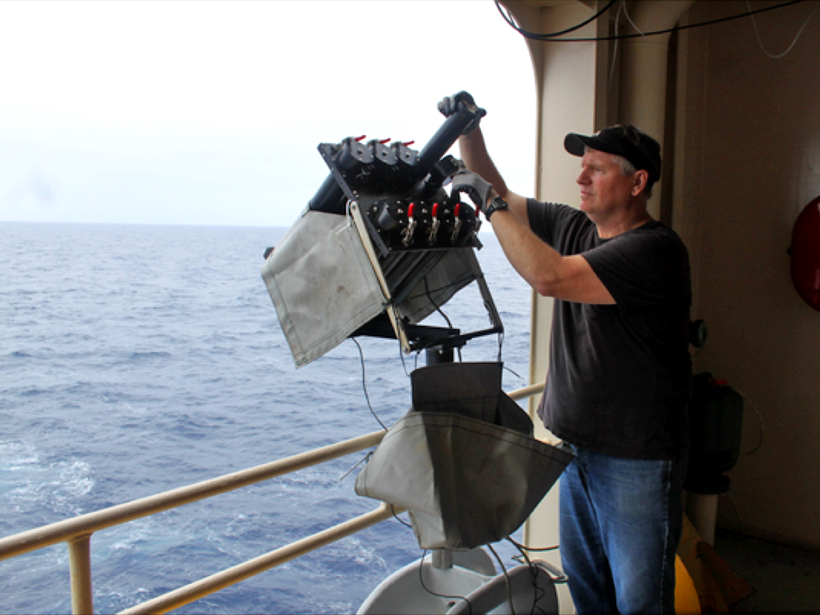Source: Geophysical Research Letters
Earth’s ocean currents carry heat across the planet, playing a fundamental role in climate variability. The Atlantic Meridional Overturning Circulation (AMOC) is a crucial part of this system. This large-scale, partly density driven, partly wind driven current acts as a conveyor belt, sinking cold surface water deep into the North Atlantic Ocean at high latitudes and driving vast quantities of heat north from the South Atlantic Ocean.
Variations in the AMOC are tied to storm tracks and precipitation in North America and Europe, sea level rise, El Niño, and the ocean’s carbon dioxide uptake. For this, the South Atlantic is a key region to monitor changes in the AMOC and the northward heat transport. In a new study, Goes et al. point out that despite the increased knowledge of the role of the South Atlantic in these phenomena, few studies investigate the uncertainties associated with a long-term monitoring system in one of Earth’s least observed regions.
For decades, the National Oceanic and Atmospheric Administration (NOAA) has been gathering a suite of ocean observations to improve AMOC models that may serve as an early warning system for future climate change. NOAA’s expendable bathythermograph (XBT) probes have helped remove data blind spots in the South Atlantic by measuring upper water column temperatures. Located in one particularly important ocean path, the AX18 transect, which runs from South America to Cape Town, South Africa, provides the longest available record of the AMOC variability in the South Atlantic Ocean.
Researchers have been launching XBT probes off ships on transoceanic voyages for over 50 years. These instruments measure electrical resistance changes as they descend through the water, relaying the information back via small wires, and translate these measurements into temperature data. Scientists can then track their depth using standard fall rate equations. Small changes in the production details of XBTs, such as wire coating, mass of the probe nose, and thermistor variability, may impact the accuracy of these measurements, and these changes are known to vary over time, affecting long-term estimates of climate signals such as global ocean heat content.
By simulating XBT observations in a high horizontal resolution ocean model, the authors set out to better understand how the historical XBT measurement errors may affect the meridional mass and heat transport across one key ocean section in the South Atlantic Ocean. Results obtained in the study show that the errors, as given by the main XBT manufacturer, can produce biases in the AMOC and heat transport estimates of 3% to 8% of their mean estimated values, which is small in comparison to their intrinsic seasonal and year-to-year variability. Estimated long-term trends in these quantities, however, are also small and are not statistically significant. When historical XBT errors are simulated in the model since the 1970s, they produce biases that are higher than the intrinsic trends and that are statistically significant after the 1990s, coincident with changes made in some of the probe components.
Thanks to a large international effort, the AMOC is currently being monitored using a combination of data from a suite of hydrographic and satellite observations, as well as numerical modeling outputs. Ultimately, continuous assessment and correction of observed biases from a multiplatform observing system, including XBTs, are necessary to achieve a better understanding of the long-term changes in the Earth’s heat budget. (Geophysical Research Letters, doi:10.1002/2014GL061802, 2015)
—Eric Betz, Freelance Writer
Citation: Betz, E. (2015), Data correction needed for long-term heat transport monitoring, Eos, 96, doi:10.1029/2015EO039095. Published 10 November 2015.
Text © 2015. The authors. CC BY-NC 3.0
Except where otherwise noted, images are subject to copyright. Any reuse without express permission from the copyright owner is prohibited.

